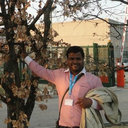Analysis of chlorophyll a fluoresence changes in weak light in heat treated Amaranthus chloroplasts.
Ключові слова
Анотація
After preheating of Amaranthus chloroplasts at elevated temperatures (up to 45°C), the chlorophyll a fluorescence level under low excitation light rises as compared to control (unheated) as observed earlier in other chloroplasts (Schreiber U and Armond PA (1978) Biochim Biophys Acta 502: 138-151). This elevation of heat induced fluorescence yield is quenched by addition of 0.1 mM potassium ferricyanide, suggesting that with mild heat stress the primary electron acceptor of photosystem II is more easily reduced than the unheated samples. Furthermore, the level of fluorescence attained after illumination of dithionite-treated samples is independent of preheating (up to 45°C). Thus, these experiments indicate that the heat induced rise of fluorescence level at low light can not be due to changes in the elevation in the true constant F0 level, that must by definition, be independent of the concentration of QA. It is supposed that the increase in the fluorescence level by weak modulated light is either partly associated with dark reduction of QA due to exposure of chloroplasts to elevated temperature or due to temperature induced fluorescence rise in the so called inactive photosystem II centre where QA are not connected to plastoquinone pool. In the presence of dichlorophenyldimethylurea the fluorescence level triggered by weak modulated light increases at alkaline pH, both in control and heat stressed chloroplasts. This result suggests that the alkaline pH accelerates electron donation from secondary electron donor of photosystem II to QA both in control and heat stressed samples. Thus the increase in fluorescence level probed by weak modulated light due to preheating is not solely linked to increase in true F0 level, but largely associated with the shift in the redox state of QA, the primary stable electron acceptor of photosystem II.


